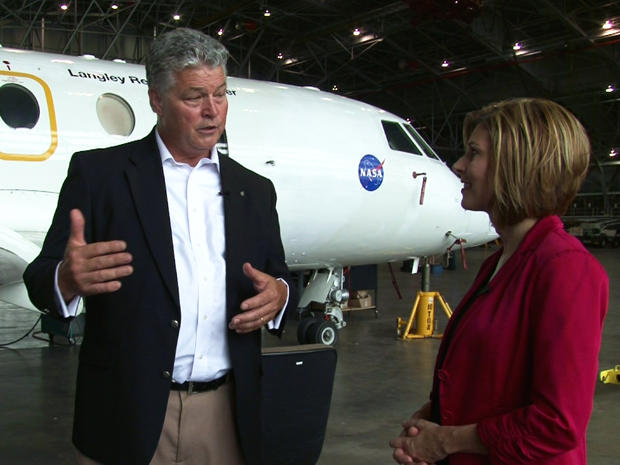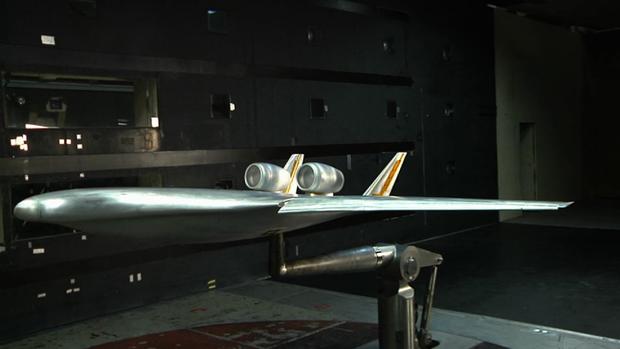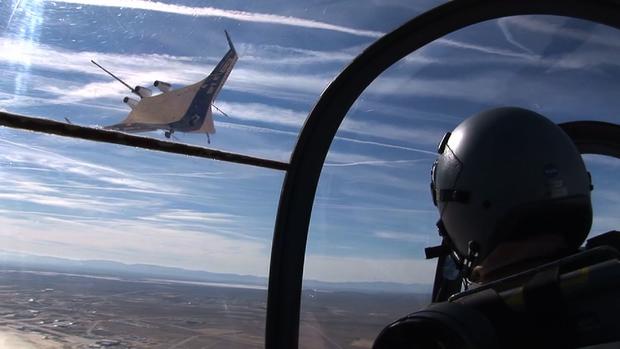What "bugs" NASA's Environmentally Responsible Aviation project engineers?
(Video footage courtesy NASA)
HAMPTON, Va. Who would've thought that some of NASA's best minds would be figuring out how to keep bugs from sticking to airplane wings? It turns out squished bug residue is a huge fuel-waster on commercial flights. NASA engineer Fayette Collier leads a team that's exploring ways to solve that problem.
"What those bug adherences do is they cause an aerodynamic disturbance on the wing," says Collier. "It's called turbulent boundary layer."
Collier leads NASA's giant Environmentally Responsible Aviation (ERA) project headquartered at NASA's Langley Research Center in Hampton, Va. The mission is to find novel ways to save fuel, reduce noise, and cut back on harmful nitrogen oxide emissions from air travel.
For the bug challenge, they're testing a combination of manufacturing techniques and coatings.
"We found that it's not one or the other, that you have to have them in concert. So we kind of bake in the coating while we are manufacturing the leading edge of the wing," Collier says.
Another project involves a futuristic design that shows promise for the future. They've already flown more than 100 test flights of the remote piloted X-48 from NASA's Dryden Flight Research Center in California. NASA says the X-48's hybrid wing body is quiet and efficient.
They're also testing an advanced vehicle concept to cut back on noise. Engineer Hamilton Fernandez is working on one such effort.
"The concept of integrating the propulsion system on top of the aircraft and the shape of the advanced vehicle concept itself create an opportunity to shield the population underneath during landing and takeoff from airports," says Fernandez.
He says that could mean we will be flying around someday with engines on top of the plane instead of underneath the wings.
From dozens of proposals, NASA engineers have culled out eight promising ideas that will be tested in applied-technology, real-world demonstrations. Boeing, Pratt & Whitney and GE are among the corporations working with NASA and positioned to benefit from the technology. Taxpayers are shelling out $70 million dollars a year for the ERA project. Technology demonstrations are already underway and will continue through 2015 when the six-year development effort is scheduled to end.
NASA's researchers say they hope to introduce mature technologies for aircraft configurations going into service by 2025 that will reduce "aircraft drag by 8 percent, weight by 10 percent, engine specific fuel consumption by 15 percent, oxides of nitrogen emissions of the engine by 75 percent and noise by one-eighth of current standards."
The dividends could be huge. The simple act of finding the perfect non-stick bug surface could save five percent in fuel costs. Considering that U.S. airlines used 16 billion gallons of fuel last year, that step alone could theoretically save the airlines $2.3 billion dollars.
Raquel DeSouza contributed to this report.



